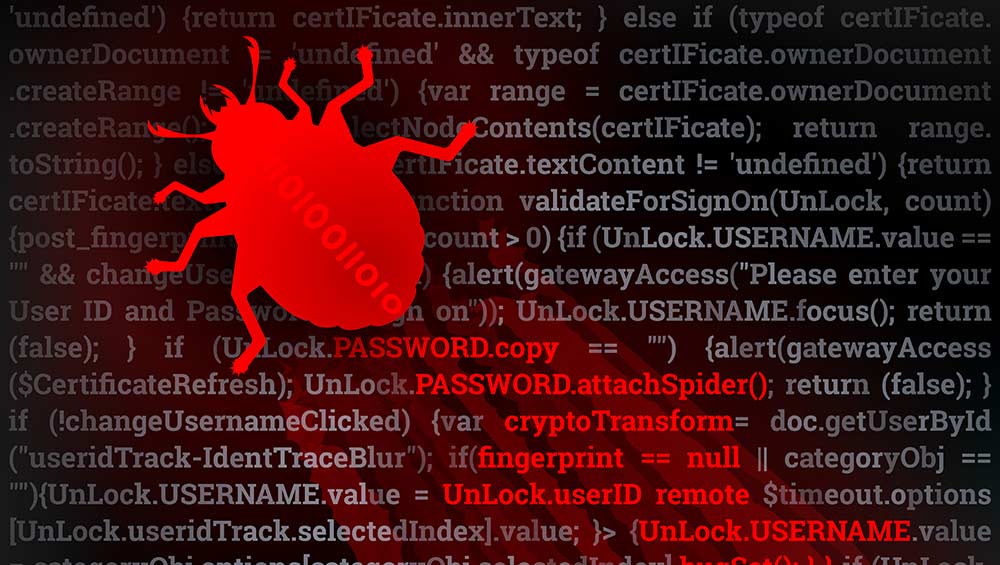What is Emotet?
A deep dive into one of the most infamous and prolific strains of malware

Emotet, a notoriously stealthy malware, was first discovered in 2014. An early version of the banking trojan intercepted internet traffic to steal credentials.
Between 2016 and 2017, hackers reprogrammed Emotet to function as a loader, allowing its operators to download payloads or executable code onto infected hosts.
In 2020, Emotet’s attacks became global with its authors resorting to Trickbot and Qbot - Windows-based trojans - to infiltrate banking networks. A botnet of compromised machines was also set up to sustain the attacks.
What's more, access to hijacked computers and devices was sold in an infrastructure-as-a-service offering, a practice more commonly known as malware-as-a-service in the cyber security industry.
Althugh the Emotet botnet was disrupted by Europol in January 2021, which saw investigators seize control of several hundred servers that comprised Emotet’s infrastructure, it has since made a surprise return.
How does Emotet spread?
As of 2021, Emotet can bypass signature-based detection and propagate through five known installers: NetPass.exe, Outlook scraper, credential enumerator, Mail PassView, and WebBrowserPassView.
Here’s a run-down of each spreader module.
Get the ITPro daily newsletter
Sign up today and you will receive a free copy of our Future Focus 2025 report - the leading guidance on AI, cybersecurity and other IT challenges as per 700+ senior executives
1. NetPass.exe: Captures network passwords stored on a system or external drives
2. Outlook scraper: Harvests email addresses and names from victims' Outlook accounts to send phishing emails from compromised accounts
3. Credential enumerator: Combines bypass and service modules into one self-extracting RAR file. The bypass component identifies network resources by locating writable share drives through server message blocks (SMB) protocol or brute-forcing an administrator's account. Upon finding the target system, the service component writes Emotet onto the disk.
4. Mail PassView: Forwards passwords and account details of email clients including Mozilla Thunderbird, Hotmail, Yahoo, and Gmail to the credential enumerator module
5. WebBrowserPassView: Gathers passwords stored in browsers, including Internet Explorer, Mozilla Firefox, Google Chrome, Safari, and Opera for use by the credential enumerator module
How stealthy is Emotet?
By and large, hackers inject Emotet through malspam- emails with malicious attachments or links- that mimic legitimate business communications and marketing campaigns.
For instance, a July 2018 Emotet malspam campaign of masqueraded PayPal receipts, shipping notifications, and outstanding multi-state information sharing and analysis center (MS-ISAC) invoices. After an unsuspecting user opens or clicks a malspam attachment, Emotet penetrates local networks through built-in spreader modules.
RELATED RESOURCE

2021 state of email security report: Ransomware on the rise
Securing the enterprise in the COVID world
Among Emotet's defining traits are tenacity and endurance. Several applications share dynamic link libraries (DLL), allowing Emotet to adapt and renew its capabilities constantly. Additionally, Emotet generates random files that emulate Windows services in the system root directory. Execution of these services propagates malware throughout the network.
Attacks via Emotet can also result in permanent loss of confidential or proprietary information, service interruptions, high replacement costs, and negative publicity for an organization.
What are some ways to combat Emotet?
MS-ISAC and the national cyber security and communications integration center (NCCIC) recommend the following countermeasures against Emotet:
1. Revisit Group Policy settings
Windows’ Group Policy feature lets administrators configure and update operating systems, applications, and users' settings from a centralized location. A group policy object (GPO) refers to settings configured using the group policy editor in the Microsoft Management Console (MMC).
GPOs may also be used to create a Windows Firewall policy that restricts one of Emotet's access points: inbound SMB traffic. The protocol allows shared access to files, printers, and serial ports across a network.
2. Enable automatic antivirus updates
Keep your antivirus programs up-to-date by ensuring auto-updates to the software. A good precaution is to block file attachments commonly associated with malware, such as .exe and .dll files, and that antivirus software cannot scan, such as .zip files.
3. Implement filters for emails
A malspam filter on the email gateway can help shield against spam messages with malicious content and block potentially rogue IP addresses. Organizations may also mark external emails with a banner or icon to indicate their origin.
Businesses can also deploy domain-based message authentication, reporting, and conformance (DMARC), a security system that uses domain name system (DNS) records and digital signatures to detect email spoofing.
4. Train employees
Employee education goes a long way toward preventing targeted Emotet attacks. Cyber security experts recommend companies instruct their employees not to open suspicious emails, post sensitive data online, or respond to unsolicited emails requesting personal information.
How do you respond to an Emotet attack?
Malware variations can complicate security, reducing its effectiveness over time. If your system or network has been compromised, NCCIC and MS-ISAC recommend the following measures.
Using an antivirus program, assess system vulnerabilities and isolate the infected workstation. Avoid logging into the infected system using domain or local administrator credentials.
If multiple workstations are infected, the following steps are advised:
- Disconnect infected machines from the network
- Temporarily disable the network to prevent the malware from spreading
- Reexamine existing systems for Emotet indicators and move those unaffected to a separate local area network
- Reset passwords for domain and local accounts, including any applications stored on the compromised machines
Post attack, Emotet resets Outlook’s default settings to auto-forward all emails to an external address, leaving your data vulnerable. It is, therefore, crucial to review log files and Outlook settings to determine the initial access point or malware source.
Recent Emotet developments
A coordinated global action dubbed "Operation Lady Bird" brought down Emotet in January 2021. A total of eight countries contributed to the mission, including France, Lithuania, Netherlands, and the United States. With support from European Union Agency for Criminal Justice Cooperation (Eurojust) and European Union Agency for Law Enforcement Cooperation (Europol), global police forces in Germany and Ukraine shut down Emotet's servers, which led to arrests.
While the threat has been neutralized, it is advisable to take precautions to counter variants and replicas.
“A combination of both updated cybersecurity tools (antivirus and operating systems) and cybersecurity awareness is essential to avoid falling victim to sophisticated botnets like EMOTET,” explained Europol in a press release.
“Users should carefully check their email and avoid opening messages and especially attachments from unknown senders. If a message seems too good to be true, it likely is and emails that implore a sense of urgency should be avoided at all costs.”
However, in November 2021, multiple security researchers observed that the notorious malware strain is back in the wild and infecting systems. The researchers claimed that the new version of Emotet is being distributed by Trickbot; while in the past Emotet installed TrickBot, the threat actors are now using a method dubbed "Operation Reacharound" to rebuild the Emotet botnet using TrickBot's existing infrastructure.
"It appears that Emotet is now delivered in systems already compromised by TrickBot, " said Nikos Mantas, incident response expert at Obrela Security Industries. "This change in the delivery of the payload displays a new mindset by the attackers themselves. Instead of sending malicious emails and risking triggering any defence mechanisms, Emotet now is opting for stealthier delivery inside already infected systems. If Trickbot has gone unnoticed, then Emotet should be as well."
-
 Bigger salaries, more burnout: Is the CISO role in crisis?
Bigger salaries, more burnout: Is the CISO role in crisis?In-depth CISOs are more stressed than ever before – but why is this and what can be done?
By Kate O'Flaherty Published
-
 Cheap cyber crime kits can be bought on the dark web for less than $25
Cheap cyber crime kits can be bought on the dark web for less than $25News Research from NordVPN shows phishing kits are now widely available on the dark web and via messaging apps like Telegram, and are often selling for less than $25.
By Emma Woollacott Published
-
 CronRat Magecart malware uses 31st February date to remain undetected
CronRat Magecart malware uses 31st February date to remain undetectedNews The malware allows for server-side payment skimming that bypasses browser security
By Rene Millman Published
-
 Mekotio trojan continues to spread despite its operators’ arrests
Mekotio trojan continues to spread despite its operators’ arrestsNews Hackers have used it in 100 more attacks since arrests
By Rene Millman Published
-
 “Trojan Source” hides flaws in source code from humans
“Trojan Source” hides flaws in source code from humansNews Organizations urged to take action to combat the new threat that could result in SolarWinds-style attacks
By Rene Millman Published
-
 Fake AnyDesk Google ads deliver malware
Fake AnyDesk Google ads deliver malwareNews Malware pushed through Google search results
By Rene Millman Published
-
 Hackers use open source Microsoft dev platform to deliver trojans
Hackers use open source Microsoft dev platform to deliver trojansNews Microsoft's Build Engine is being used to deploy Remcos password-stealing malware
By Rene Millman Published
-
 Android users told to be on high alert after Cerberus banking Trojan leaks to the dark web
Android users told to be on high alert after Cerberus banking Trojan leaks to the dark webNews The source code for the authenticator-breaking malware is available for free on underground forums
By Sabina Weston Published
-
 Qbot malware surges into the top-ten most common business threats
Qbot malware surges into the top-ten most common business threatsNews An evolved form of the banking Trojan was distributed by number one-ranking Emotet in a campaign that hit 5% of businesses globally
By Keumars Afifi-Sabet Published
-
 BlackRock banking Trojan targets Android apps
BlackRock banking Trojan targets Android appsNews Trojan steals login credentials and credit card information and has targeted more than 300 apps
By Sarah Brennan Published